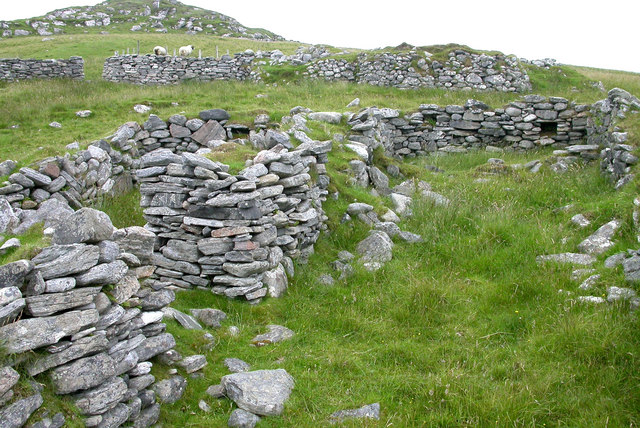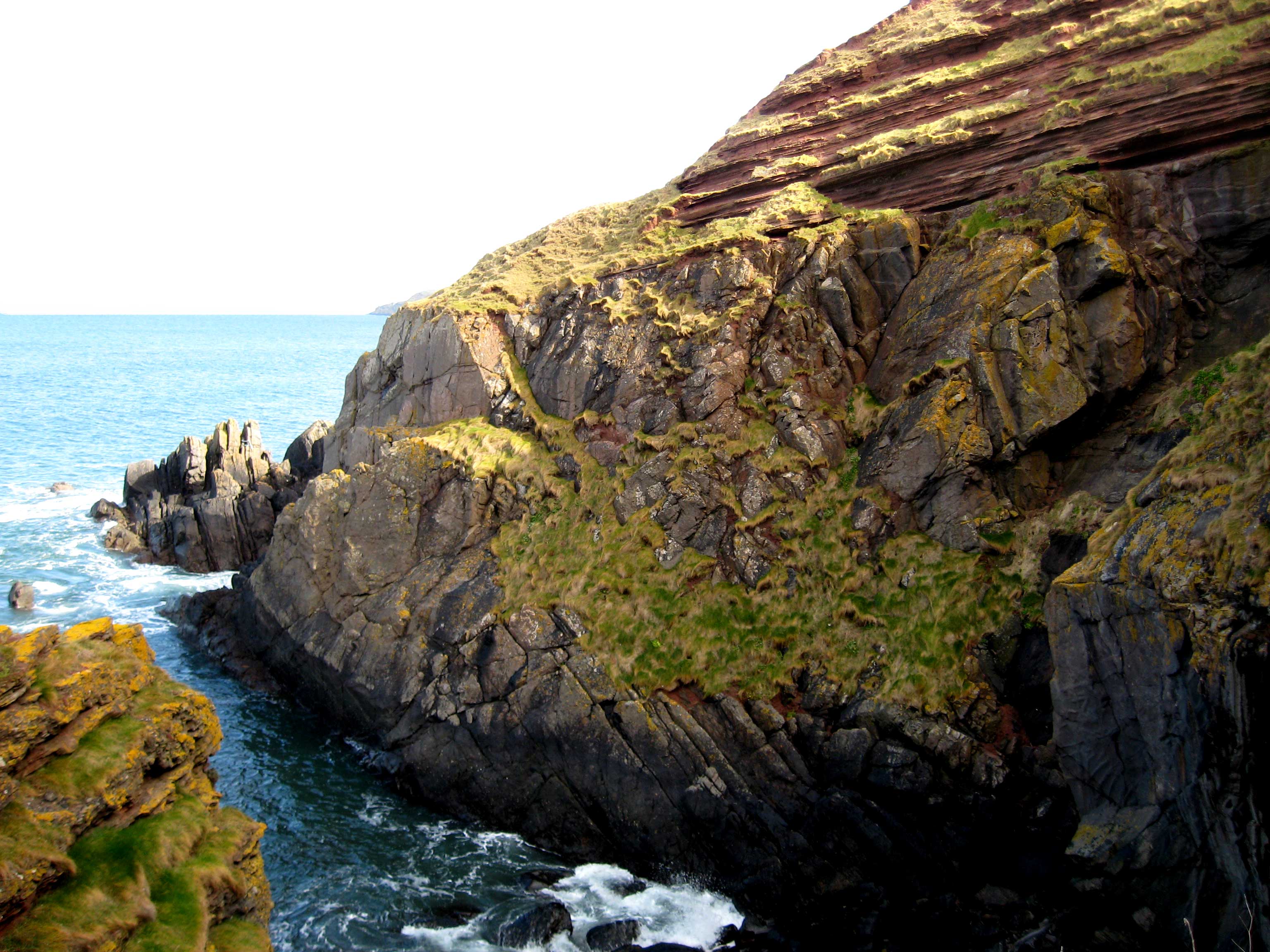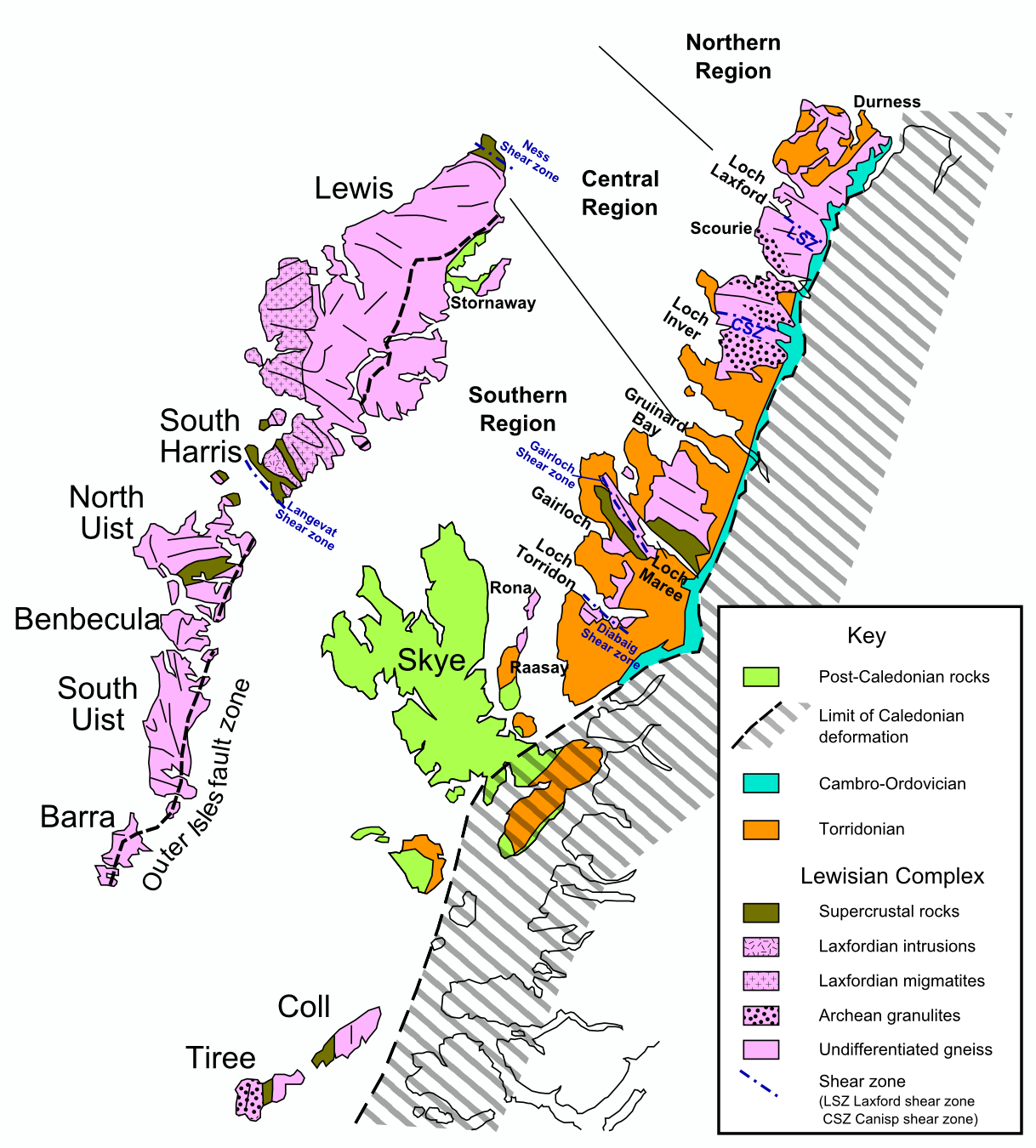|
Islands Of Scotland
This is a list of islands of Scotland, the mainland of which is part of the island of Great Britain. Also included are various other related tables and lists. The definition of an offshore island used in this list is "land that is surrounded by seawater on a daily basis, but not necessarily at all stages of the tide, excluding human devices such as bridges and causeways". Scotland has around 900 offshore islands, most of which are to be found in four main groups: Shetland, Orkney, and the Hebrides, sub-divided into the Inner Hebrides and Outer Hebrides. There are also clusters of islands in the Firth of Clyde, Firth of Forth, and Solway Firth, and numerous small islands within the many bodies of fresh water in Scotland including Loch Lomond and Loch Maree. The largest island is Lewis and Harris, which extends to , and there are a further 200 islands which are greater than in area. Of the remainder, several, such as Staffa and the Flannan Isles, are well-known, despite their sm ... [...More Info...] [...Related Items...] OR: [Wikipedia] [Google] [Baidu] |
Staffa
Staffa (, , from the Old Norse for stave or pillar island) is an island of the Inner Hebrides in Argyll and Bute, Scotland. The Vikings gave it this name as its columnar basalt reminded them of their houses, which were built from vertically placed tree-logs. Staffa lies about west of the Isle of Mull; its area is and the highest point is above sea level. The island came to prominence in the late 18th century after a visit by Sir Joseph Banks. He and his fellow-travellers extolled the natural beauty of the basalt columns in general and of the island's main sea cavern, which Banks renamed 'Fingal's Cave'. Their visit was followed by those of many other prominent personalities throughout the next two centuries, including Queen Victoria and Felix Mendelssohn. The latter's '' Hebrides Overture'' brought further fame to the island, which was by then uninhabited. It is now in the care of the National Trust for Scotland. Geology and pre-history In prehistoric times (Pleistocene) ... [...More Info...] [...Related Items...] OR: [Wikipedia] [Google] [Baidu] |
Volcanoes
A volcano is commonly defined as a vent or fissure in the crust of a planetary-mass object, such as Earth, that allows hot lava, volcanic ash, and gases to escape from a magma chamber below the surface. On Earth, volcanoes are most often found where tectonic plates are diverging or converging, and because most of Earth's plate boundaries are underwater, most volcanoes are found underwater. For example, a mid-ocean ridge, such as the Mid-Atlantic Ridge, has volcanoes caused by divergent tectonic plates whereas the Pacific Ring of Fire has volcanoes caused by convergent tectonic plates. Volcanoes resulting from divergent tectonic activity are usually non-explosive whereas those resulting from convergent tectonic activity cause violent eruptions."Mid-ocean ridge tectonics, volcanism and geomorphology." Geology 26, no. 455 (2001): 458. https://macdonald.faculty.geol.ucsb.edu/papers/Macdonald%20Mid-Ocean%20Ridge%20Tectonics.pdf Volcanoes can also form where there is stretching ... [...More Info...] [...Related Items...] OR: [Wikipedia] [Google] [Baidu] |
Tertiary Period
The Tertiary ( ) is an obsolete Period (geology), geologic period spanning 66 million to 2.6 or 1.8 million years ago. The period began with the extinction of the non-bird, avian dinosaurs in the Cretaceous–Paleogene extinction event, at the start of the Cenozoic, Cenozoic Era, and extended to the beginning of the Quaternary glaciation at the end of the Pliocene, Pliocene Epoch. The Tertiary has not been recognised by the International Commission on Stratigraphy (ICS) since the late 1980s, with the timespan of the Tertiary now being split in to the earlier Paleogene and the more recent Neogene periods, though the Tertiary continues to be used in some scientific publications. Historical use of the term The term Tertiary was first used by Giovanni Arduino (geologist), Giovanni Arduino during the mid-18th century. He classified geologic time into primitive (or primary), secondary, and tertiary periods based on observations of geology in Northern Italy. Later a fourth period, t ... [...More Info...] [...Related Items...] OR: [Wikipedia] [Google] [Baidu] |
Rùm
Rùm (), a Scottish Gaelic language, Scottish Gaelic name often Anglicisation, anglicised to Rum ( ), is one of the Small Isles of the Inner Hebrides, off the west coast of Scotland, in the district of Lochaber. For much of the 20th century the name became Rhum, a spelling invented by the former owner, George Bullough, 1st Baronet Bullough, Sir George Bullough, because he did not relish the idea of having the title "Laird of Rum". It is the largest of the Small Isles, and the 15th largest Scottish island, and is inhabited by 40 people, all of whom live in the hamlet of Kinloch, Rùm, Kinloch on the east coast. The island has been inhabited since the 8th millennium BC and provides some of the earliest known evidence of human occupation in Scotland. The early Celts, Celtic and Norsemen, Norse settlers left only a few written accounts and artefacts. From the 12th to 13th centuries on, the island was held by various clans including the Clan MacLean, MacLeans of Coll. The population ... [...More Info...] [...Related Items...] OR: [Wikipedia] [Google] [Baidu] |
Old Red Sandstone
Old Red Sandstone, abbreviated ORS, is an assemblage of rocks in the North Atlantic region largely of Devonian age. It extends in the east across Great Britain, Ireland and Norway, and in the west along the eastern seaboard of North America. It also extends northwards into Greenland and Svalbard. These areas were a part of the paleocontinent of Euramerica (Laurussia). In Britain it is a lithostratigraphic unit (a sequence of rock strata) to which stratigraphers accord supergroup status and which is of considerable importance to early paleontology. The presence of ''Old'' in the name is to distinguish the sequence from the younger New Red Sandstone which also occurs widely throughout Britain. Sedimentology The Old Red Sandstone describes a group of sedimentary rocks deposited in a variety of environments in the late Silurian, through the Devonian and into the earliest part of the Carboniferous. The body of rock, or facies, is dominated by terrigenous deposits and co ... [...More Info...] [...Related Items...] OR: [Wikipedia] [Google] [Baidu] |
Shapinsay
Shapinsay (, ) is one of the Orkney Islands off the north coast of mainland Scotland. With an area of , it is the eighth largest island in the Orkney archipelago. It is low-lying and, with a bedrock formed from Old Red Sandstone overlain by boulder clay, fertile, causing most of the area to be used for farming. Shapinsay has two nature reserves and is notable for its bird life. Balfour Castle, built in the Scottish Baronial style, is one of the island's most prominent features, a reminder of the Balfour family's domination of Shapinsay during the 18th and 19th centuries; the Balfours transformed life on the island by introducing new agricultural techniques. Other landmarks include a standing stone, an Iron Age broch, a souterrain and a salt-water shower. There is one village on the island, Balfour, from which roll-on/roll-off car ferries sail to Kirkwall on the Orkney Mainland. At the 2011 census, Shapinsay had a population of 307. The economy of the island is primarily ba ... [...More Info...] [...Related Items...] OR: [Wikipedia] [Google] [Baidu] |
Lewisian Complex
The Lewisian complex or Lewisian gneiss is a suite of Precambrian metamorphic rocks that outcrop in the northwestern part of Scotland, forming part of the Hebridean terrane and the North Atlantic craton, North Atlantic Craton. These rocks are of Archean, Archaean and Paleoproterozoic age, ranging from 3.0–1.7 billion years (Year#SI prefix multipliers, Ga). They form the Basement (geology), basement on which the Stoer Group, Wester Ross Supergroup and probably the Loch Ness Supergroup sediments were deposited. The Lewisian consists mainly of Granite, granitic gneisses with a minor amount of supracrustal rocks. Rocks of the Lewisian complex were caught up in the Caledonian orogeny, appearing in the hanging walls of many of the thrust faults formed during the late stages of this tectonic event. Distribution The main outcrops of the Lewisian complex are on the islands of the Outer Hebrides, including Isle of Lewis, Lewis, from which the complex takes its name. It is also exp ... [...More Info...] [...Related Items...] OR: [Wikipedia] [Google] [Baidu] |
Archean
The Archean ( , also spelled Archaean or Archæan), in older sources sometimes called the Archaeozoic, is the second of the four geologic eons of Earth's history of Earth, history, preceded by the Hadean Eon and followed by the Proterozoic and the Phanerozoic. The Archean represents the time period from (million years ago). The Late Heavy Bombardment is hypothesized to overlap with the beginning of the Archean. The Huronian glaciation occurred at the end of the eon. The Earth during the Archean was mostly a ocean world, water world: there was continental crust, but much of it was under an ocean deeper than today's oceans. Except for some rare Relict (geology), relict crystals, today's oldest continental crust dates back to the Archean. Much of the geological detail of the Archean has been destroyed by subsequent activity. The Earth's atmosphere was also vastly different in atmospheric chemistry, composition from today's: the prebiotic atmosphere was a reducing atmosphere rich in ... [...More Info...] [...Related Items...] OR: [Wikipedia] [Google] [Baidu] |
Sanday, Orkney
Sanday (, ) is one of the inhabited islands of Orkney that lies off the north coast of mainland Scotland. With an area of , it is the third largest of the Orkney Islands.Haswell-Smith (2004) p. 334. The main centres of population are Lady Village and Kettletoft. Sanday can be reached by Orkney Ferries or by plane ( Sanday Airport) from Kirkwall on the Orkney Mainland. On Sanday, an on-demand public minibus service allows connecting to the ferry. Etymology The Picts were the pre-Norse inhabitants of Sanday but very few placenames remain from this period. The Norse named the island or because of the predominance of sandy beaches and this became "Sanday" during the Scots- and English-speaking periods. The similarly named Sandoy is in the Faroe Islands. Many names of places and natural features derive from Old Norse. According to Dorward (1995), the placename ''Kettletoft'' means ' Kettil's croft' although ''toft'' in this context may mean 'abandoned site of house' from the ... [...More Info...] [...Related Items...] OR: [Wikipedia] [Google] [Baidu] |
Tiree
Tiree (; , ) is the most westerly island in the Inner Hebrides of Scotland. The low-lying island, southwest of Coll, has an area of and a population of around 650. The land is highly fertile, and crofting, alongside tourism, and fishing are the main sources of employment for the islanders. Tiree, along with Colonsay, enjoys a relatively high number of total hours of sunshine during the late spring and early summer compared to the average for the United Kingdom. Tiree is a popular windsurfing venue; it is sometimes referred to as the "Hawaii of the north". In most years, the Tiree World Classic surfing event is held here. People native to the island are known as Tirisdich. History Tiree is known for the 1st-century-AD broch, for the prehistoric carved Ringing Stone and for the birds of the headland. , abbot of Iona Abbey 679–704, recorded several stories relating to St Columba and the island of Tiree. In one story, Columba warned a monk called Berach not to sai ... [...More Info...] [...Related Items...] OR: [Wikipedia] [Google] [Baidu] |
Isle Of Mull
The Isle of Mull or simply Mull ( ) is the second-largest island of the Inner Hebrides (after Skye) and lies off the west coast of Scotland in the Council areas of Scotland, council area of Argyll and Bute. Covering , Mull is the fourth-largest island in Scotland. From 2001 to 2020, the population has gradually increased: during 2020 it was estimated to be 3,000, in the United Kingdom Census 2011, 2011 census it was about 2,800, and in 2001, it was measured at 2,667 people. It has the eighth largest island population in Scotland. In the summer, these numbers are augmented by an influx of many tourists. Much of the year-round population lives in the colourful main settlement of Tobermory, Mull, Tobermory. There are two distilleries on the island: the Tobermory distillery, formerly named Ledaig, produces single malt Scotch whisky and another, opened in 2019 and located in the vicinity of Tiroran, which produces Whitetail Gin. Mull is host to numerous sports competitions, nota ... [...More Info...] [...Related Items...] OR: [Wikipedia] [Google] [Baidu] |










